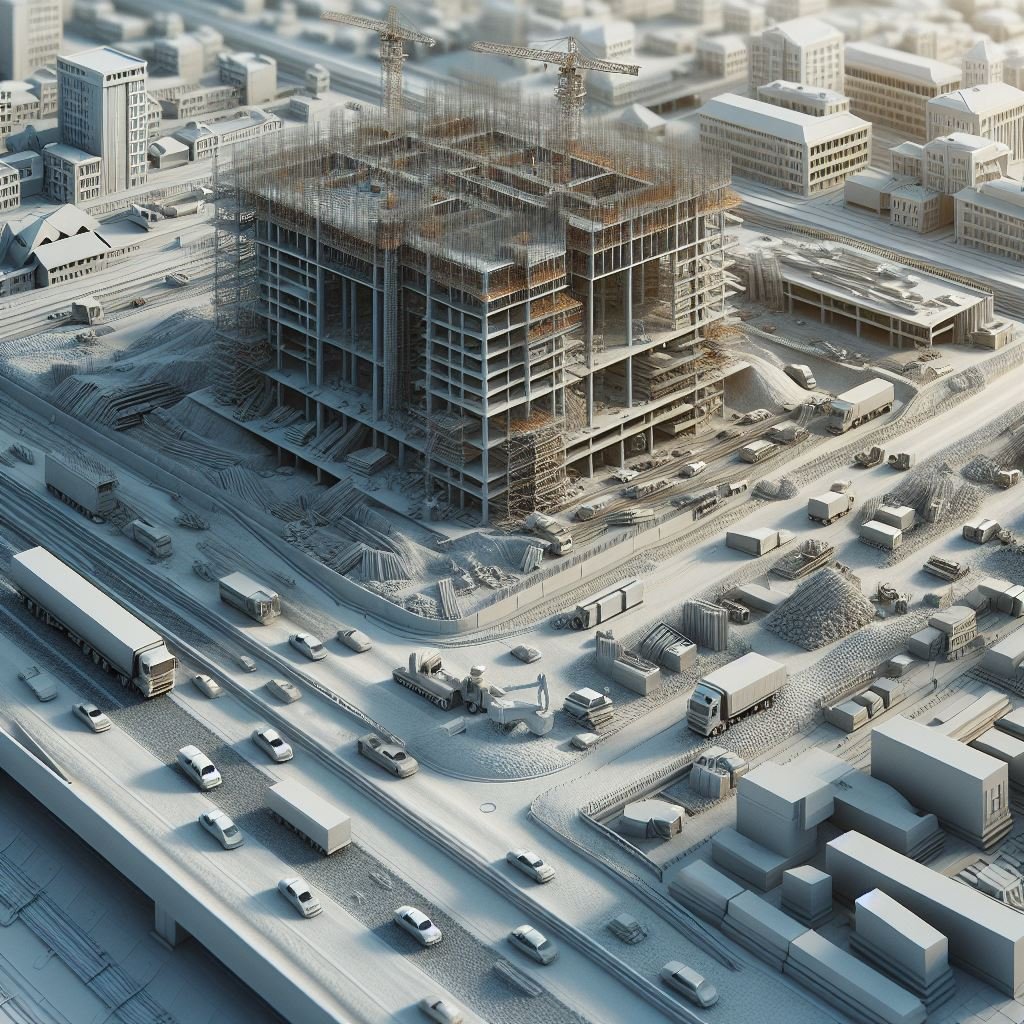In recent years, the construction industry has witnessed a significant transformation thanks to the adoption of Building Information Modeling (BIM). In this post, we will explore in detail the benefits of BIM, with a special focus on the time and money savings this technology provides to construction projects. The efficiency and accuracy offered by BIM not only streamline the planning and execution process but also help reduce costs associated with rework and design errors.
Time Savings Using BIM
Currently, various sources indicate significant time savings in civil construction projects with the implementation of Building Information Modeling (BIM). According to the “The Business Value of BIM for Infrastructure” study conducted by Dodge Data & Analytics in 2020, projects utilizing BIM experience an average reduction of 7% in the total project lifecycle time. Additionally, the same research indicates that 56% of respondents noticed a decrease in construction time due to BIM implementation. These data clearly illustrate the positive impact of BIM on the efficiency and productivity of civil construction projects, resulting in substantial time savings.
So, the important question arises: what should I do to save time through the BIM Methodology in my projects?
To answer it, let’s present some simple ways to initiate this process, and in a short period, it will be possible to identify results in your Projects.
Reducing Civil Construction Project Time with BIM
Efficient collaboration: Promote collaboration among all parties involved in the project, including architects, engineers, contractors, and clients, using BIM platforms to share information transparently. This will save time throughout the Project and make clear the expectations of all Project stakeholders, which will make all the difference over the lifecycle, avoiding late revisions and add-ons to address something that was not well defined beforehand.
Process standardization: Establish clear standards and procedures for BIM use throughout the project lifecycle, ensuring consistency and efficiency at all stages. This way, there will always be a step-by-step guide to be followed during the Project lifecycle stages, serving as a guide for the sequence of tasks to be executed.
Early conflict detection: Take advantage of BIM’s conflict detection capabilities to identify and resolve design issues before they occur on the construction site, avoiding rework and delays, which are very common in the daily routine of works due to lack of Project coordination.
Simulations and analyses: Use simulation and analysis tools available in the BIM Methodology to predict and optimize project performance in different scenarios, such as traffic flow analysis or structural analysis. This will make a total difference and provide decision-making with a more robust justification, thus making decisions more efficient.
Saving Money Using BIM
A study by McGraw Hill Construction, titled “The Business Value of BIM in North America” (2014), revealed that companies adopting BIM achieved an average savings of 5% to 10% in construction costs. Additionally, a report by Navigant Research, “Building Information Modeling for Green Building Study” (2013), highlighted that BIM can lead to savings of up to 20% in total project costs, including savings in design, construction, and operations.
These data provide a clear view of the potential for financial savings when using BIM in civil construction projects. However, it is important to note that results may vary depending on the project size, complexity, and other specific factors of each venture.
How can I save money by using the BIM Methodology in my projects? Let’s mention some possibilities below.
Reducing Civil Construction Project Costs with BIM
Detailed planning: Carry out thorough planning to identify project requirements and constraints, allowing for more efficient resource allocation, leading us to another important topic, which is Lean Construction. This avoids unnecessary costs associated with late revisions and adjustments.
Early conflict detection: Use BIM tools to identify and resolve design problems in advance. As mentioned for time savings, conflict detection is also essential to avoid delays and additional costs during construction, thus reducing the financial impact on the Project as a whole.
Simulation and analysis: Simulations conducted in BIM allow optimizing the project for better performance and efficiency, which can result in significant savings over the project lifecycle, either by reducing energy consumption or even by the impacts generated throughout Construction.
For a Lean and Efficient Implementation with emphasis on Time and Money Reduction, what should I prioritize?
Considering today’s topic, if you work in a resource-constrained company and aim to start implementing BIM, we have some suggestions on where to start the BIM Implementation:
Selection of accessible tools: Opt for BIM tools that are accessible in terms of cost but still offer essential functionalities for the project. There are several options for BIM software on the market, some of which offer free or low-cost versions that can meet the company’s needs.
Internal training: Instead of investing in expensive training provided by third parties, take advantage of free or low-cost online resources, such as video tutorials and courses available on educational platforms. Additionally, promote knowledge exchange among team members, encouraging collaboration and mutual learning.
Simplified standardization: Establish modeling and documentation standards that are simple and easy to implement, taking into account the team’s capabilities and available resources. Avoid creating overly complex processes that require more time and resources to follow.
Review of internal processes: Analyze the company’s internal processes and identify areas where BIM can bring greater efficiency. For example, optimize the workflow between departments, implementing more effective collaboration and communication practices.
Focus on essential project needs: Concentrate initial BIM implementation efforts on the essential needs of projects, prioritizing areas where BIM can bring the greatest benefits in terms of cost and time reduction. As the team gains experience and financial resources become available, it is possible to gradually expand the use of BIM to other areas of the project.
Exploring the BIM Phases in Construction Projects
In conclusion, it is clear that the use of Building Information Modeling (BIM) offers a range of benefits, from time and money savings to improved project efficiency and quality. By implementing intelligent BIM practices, companies can not only reduce costs and schedules but also increase their competitiveness and delivery capacity. In the next post, we will address the BIM implementation process, exploring the different phases and how they integrate to provide great results at each stage of the construction project.




Deixe um comentário